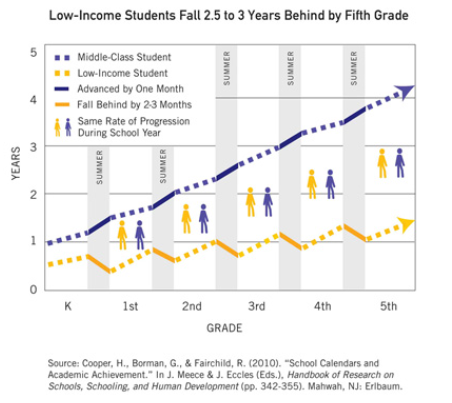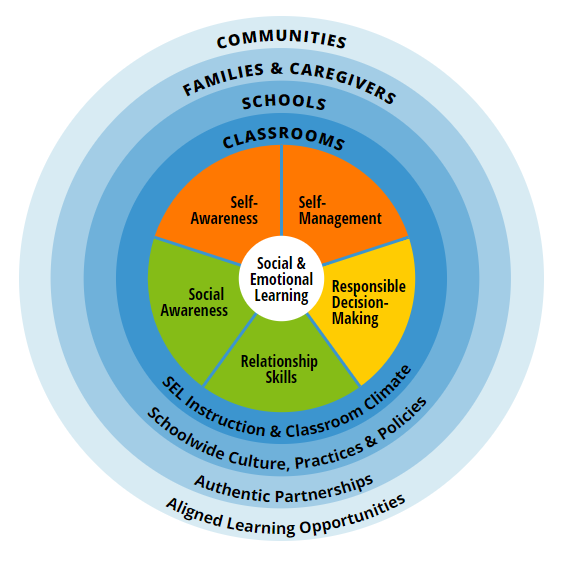Our Focus Areas
Academic
Summer learning loss
During the summer, learning loss occurs because children are not in school. While all children are affected by summer learning loss, underserved populations are disproportionately affected. All students lose about two months of math skills. Low‐income students lose an additional two to three months of reading skills each summer, whereas middle‐ and high‐income students are maintaining or even gaining in reading skills thanks to being able to visit museums, the library, attend summer camps, and take vacations. Traditionally, low‐income students do not have those same opportunities.

Achievement gap
The effect of summer learning loss is cumulative. According to the National Summer Learning Association (NSLA) based on research out of Johns Hopkins University, by the end of fifth grade, disadvantaged youth are nearly three grade equivalents behind their more affluent peers in reading; this achievement gap can specifically be attributed to differences in learning over the summer. Two‐thirds of the achievement gap present in ninth grade between lower‐ and higher‐income youth can be explained by unequal summer learning opportunities during the elementary school years; it is a significant part of the reason that low‐income youth are less likely to graduate from high school or enter college (Alexander, Entwisle, and Olson, 2007).
Enrichment
Opportunity gap
“Opportunity gap” refers to the fact that the arbitrary circumstances in which people are born—such as their race, ethnicity, ZIP code, and socioeconomic status—determine their opportunities in life, rather than all people having the chance to achieve to the best of their potential (Teach for America).
Low‐income students have fewer opportunities for enriching non‐academic experiences relative to
their more‐affluent peers (RAND), which is why Compass for Kids also addresses the opportunity gap.
The enrichment activities at Club and Camp Compass are designed to broaden our studentsʹ worldview, teach them new skills, and give them typical childhood experiences that help them relate to their higher‐income peers as well as planting seeds that allow them to dream for their future. During Camp Compass, the swimming days and field trips connect campers to their community, providing them with an increased sense of belonging (one of our core values!).
Social-emotional learning (SEL)

According to the Collaborative for Academic and Social-emotional Learning (CASEL), social-emotional learning, or SEL, is the process through which all young people (and adults!) acquire and apply the knowledge, skills, and attitudes to develop healthy identities, manage emotions and achieve personal and collective goals, feel and show empathy for others, establish and maintain supportive relationships, and make responsible and caring decisions.
The CASEL 5 addresses five broad and interrelated areas of competence:
- self-awareness
- self-management
- social awareness
- relationship skills
- responsible decision-making
Compass for Kids has selected Leader in Me, an evidence-based curriculum for Kindergarten – Fifth grade, to use within both Club and Camp Compass to explicitly teach SEL.
Food Insecurity
Food insecurity means that you might not know where your next meal is coming from. The child food insecurity rate in Sangamon County is 15.8% (Heartland Alliance, 2019). Children in Compass for Kids programs are all from families experiencing low incomes, and therefore food insecurity is higher than in the general population. Basic needs like hunger must be addressed before children can learn and grow!
Compass for Kids provides non-perishable food to all our children through our Backpack Feeding Program, as well as dinners at Club Compass, and breakfast and lunch at Camp Compass.
